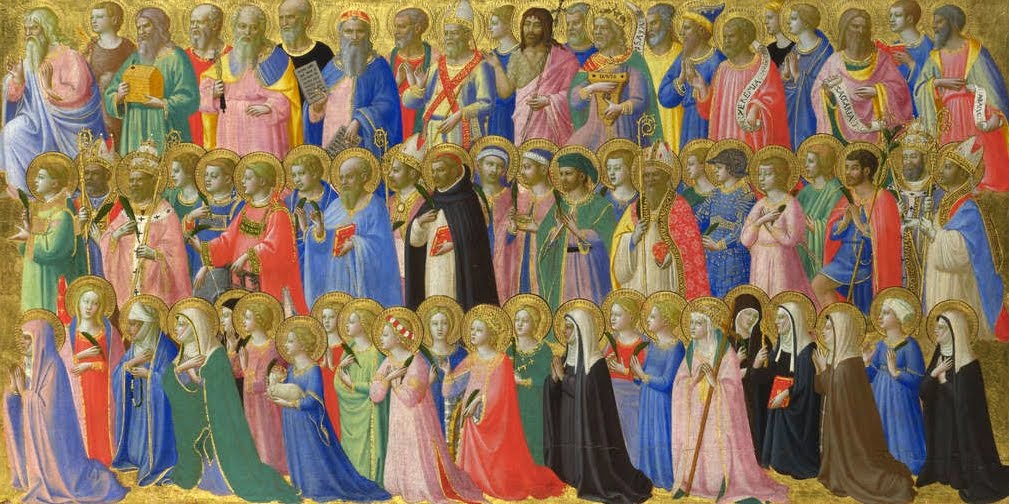The lector is appointed for a function proper to him, that of reading the word of God in the liturgical assembly. Accordingly, he is to proclaim the readings from sacred Scripture, except for the gospel in the Mass and other sacred celebrations; he is to recite the psalm between the readings when there is no psalmist; he is to present the intentions for the general intercessions in the absence of a deacon or cantor; he is to direct the singing and the participation by the faithful; he is to instruct the faithful for the worthy reception of the sacraments. He may also, insofar as may be necessary, take care of preparing other faithful who are appointed on a temporary basis to read the Scriptures in liturgical celebrations. That he may more fittingly and perfectly fulfill these functions, he is to meditate assiduously on sacred Scripture.
Aware of the office he has undertaken, the lector is to make every effort and employ suitable means to acquire that increasingly warm and living love and knowledge of Scripture that will make him a more perfect disciple of the Lord.
(Ministeria quaedam, 1972)
Lector and acolyte in general correspond to the commissioned ministries of lector and extraordinary minister of holy communion, but with the important distinction that the former are permanent installations that apply in all times and places while the latter apply for the year of commission and only in the local parish. They are also more comprehensive: acolytes may expose and repose the Eucharist and prepare the altar at the offertory during Mass, and both lectors and acolytes are responsible for training other lay ministers (... preparing other faithful who are appointed on a temporary basis to read the Scriptures in liturgical celebrations).
In 1972, these ministries replaced the minor orders (exorcist, porter, lector, acolyte) and major order of subdiaconate, which along with the clerical tonsure were suppressed because they no longer reflected their original purposes. Although the ministries are required for candidates for Holy Orders and they are still reserved to men, Pope Paul VI specified that there is not an essential connection between them and the clerical state. This had previously been understood as beginning with the tonsure that signified entrance into priestly formation, but now it is ordination to the diaconate that signifies entrance to the clerical state.
Part of the rite of institution is being presented with the Bible, and I was allowed to select one for myself. I chose a bilingual Greek/English version of the Septuagint, the original translation of the Hebrew Bible into Greek from the second century B.C. This is the version of the Scriptures that was most widely used in the first century outside of Palestine and almost the exclusive source of the Old Testament quotes in the Gospels and Epistles. It shortly after fell out of favor with Jews, partly because the wording of prophecies supported the claim that Jesus is the Messiah and partly because most of the Greek-speaking Jewish populations were exterminated or dispersed by the Jewish-Roman wars of the second century, but it continued to be the authoritative version of the Old Testament for Christians until the Vulgate was promulgated in the early 4th century and replaced it in the west; it continues to be used by the Byzantine Churches and is the source of translations used by Syriac, Armenian, and Egyptian Christians.
The Septuagint differs from the Old Testament most familiar to the English-speaking world in a few ways. The most notable is the number of books, which is the reason for the difference between Protestant and Catholic Bibles; Protestant leaders eschewed the Septuagint because it was a translation and also because the books later excluded from the canon of the Hebrew Bible include some that are theologically problematic for Protestants; the books of Tobit, Judith, Wisdom, Sirach, 1 and 2 Maccabees, Baruch, and parts of Esther and Daniel only exist in the Greek version, which is why these were rejected by Jews and Protestants but have always been accepted by Orthodox Christians who use the older canon. Also, the numbering of the Psalms is different and the text of the Book of Jeremiah, among others, is significantly different.
Roman Catholic biblical scholars of the last few centuries followed the more prolific Protestant scholars and it became fashionable to hold the later Hebrew texts were more authentic and the Septuagint text was corrupted. This view has been significantly upset by the discovery of the Dead Sea Scrolls in 1947, which provide many Hebrew texts at variance with the Masoretic versions and generally confirm that most of the Septuagint comes from an older manuscript tradition. This has yet to gain widespread acceptance because biblical scholars in general continue to rely on the last three centuries of scholarship which is dominated by English and German Protestants, but it is one of the reasons why I am interested.
 |
| I don't have a picture of me being instituted, but here I am watching the acolyte institution. |

